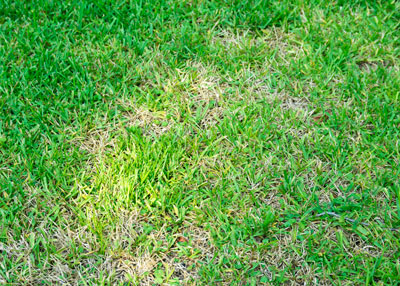Chinch Bug Damage
“Neil, I can’t figure out why my St. Augustine continues to get worse. It looks dry, and I water it, but the next day it looks like it has spread. Is this grub worm damage?”

This is what serious chinch bug damage can look like.
When I was a kid, every lawn in College Station was St. Augustine. Except for our neighbor who had bermuda – and sneezed from allergies every time that he mowed it. He finally changed out to St. Augustine, with the rest of us.
Early one Saturday I read in the Houston Post Garden Section (first thing I did every Saturday) that a farm insect known as chinch bug was invading South Texas lawns. Sure enough, next thing I knew, we had them, too.
And so do thousands of Texas homeowners at this very moment.

Chinch bugs have been active in this area for several days. They can kill large sections within one to two weeks if not treated.
Chinch Bugs …
• Always appear in the hottest, sunniest parts of your lawn (almost never in shade).
• Appear in same general areas each year.
• Appear in summer (usually late June through mid-September).
• Grass appears dry, but doesn’t respond to watering.
• Can actually kill the grass in affected patches, often within days.
• Adult chinch bugs are BB-sized black insects with irregular white diamonds on their wings.
• Nymphs are smaller, reddish and will be seen along with adults.
• Will be visible by parting the grass at the interface between dying and healthy grass.
Nurseries and hardware stores have both sprays and granular products labeled to control chinch bugs. Treat as soon as you are sure they’re the cause of the damage to your lawn.

Confirming chinch bugs requires hands-and-knees work as you part the dying grass to look for the insects. They are most active in mid-afternoon’s heat.
